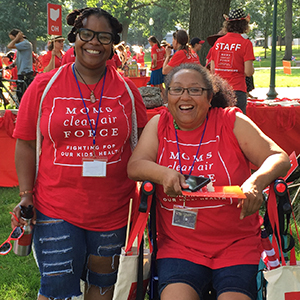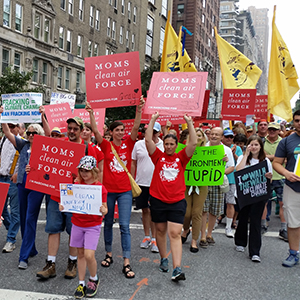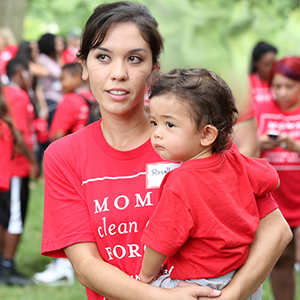This resource has been factchecked by policy experts, using the latest scientific research. Find all our sources linked below.
Particle pollution, also commonly known as soot pollution, is so deadly it contributes to millions of deaths worldwide each year. It is especially harmful to babies and children. It consists of tiny droplets or particles in the air. The smallest particles are called PM2.5, and they’re no more than 2.5 microns wide—30 times smaller than the width of a human hair. These tiny particles are easily inhaled and can become embedded in lungs and pass directly into the bloodstream, making them especially dangerous for human health.

Where does soot come from?
PM2.5 can come from a wide variety of sources. One of the largest is the burning of fossil fuels at coal-fired power plants, at industrial facilities, and in combustion engines. Soot is also emitted by wildfires. Climate change is making wildfires worse—recent research shows that around the world, they’re burning almost twice as much tree cover today compared to 20 years ago. Other sources of particle pollution include agriculture, vehicle tires, and road dust, as well as volcanic eruptions.

How soot affects health
Soot is one of the leading causes of premature death globally. Researchers estimate that air pollution from burning fossil fuels like coal and diesel is responsible for one in five deaths worldwide.
In addition to its alarming global death toll, PM2.5 can affect our health in many ways, contributing to:
- Asthma attacks
- Respiratory illness, such as chronic obstructive pulmonary disease (COPD)
- Lung and breast cancer
- Impaired immune health, including increased risks from COVID-19 infection
- Heart attacks and strokes
- Metabolic disorders, like diabetes
- Preterm birth and low birth weight
- Nervous system impacts, including cognitive effects
Soot pollution and children’s health
Far too many people in the U.S. are breathing unhealthy air. According to the most recent American Lung Association annual State of the Air Report, more than 90 million of us live in locations with a failing grade for air quality based on annual levels of particle pollution. Because of climate threats like wildfires, this number has been steadily increasing in recent years after decades of progress toward cleaner air.
Babies, children, and pregnant people are especially vulnerable to the health harms of this air pollution for multiple reasons. Young children breathe faster and take in more air per pound of body weight than adults, and children also tend to spend more time outside, increasing their exposure to harmful air pollution. This exposure is particularly dangerous when it happens during critical developmental periods: babies’ and children’s little lungs, brains, and other organs are still growing, and during pregnancy, particle pollution can even cross the placental barrier. Exposure to air pollution in the womb can put babies at increased risk for asthma and even high blood pressure. Research has also linked exposure to soot pollution to adverse birth outcomes, which can contribute to lasting health challenges for babies and children.

Soot pollution is an environmental justice concern
Communities of color and economically disadvantaged communities bear a disproportionate burden of the health impacts from soot, as they often live near pollution sources like high-traffic roads and heavily polluting industrial facilities. Older adults, people with certain chronic health conditions, and people who spend a lot of time outside, like outdoor workers, are also at higher risk for adverse impacts from PM2.5.
EPA's role in protecting people from particle pollution
PM2.5 is dangerous to human health. In the U.S., the Clean Air Act empowers the Environmental Protection Agency (EPA) to set National Ambient Air Quality Standards (NAAQS). The NAAQS establish health-based standards for some of the most common outdoor air pollutants known to harm human health, including soot. By law, these are meant to be regularly updated to account for the latest science about the impacts of air pollution. But this doesn’t always happen. For example, in 2020, the first Trump administration declined to strengthen air quality standards for particle pollution, despite expert guidance showing that the current standard didn’t adequately protect human health.
The NAAQS include both an annual standard, which sets a health-based limit of pollution exposure in a year, and a 24-hour standard, which sets a health-based limit for pollution exposure within a single day. EPA updated the NAAQS annual standard for soot pollution in 2024, making it stronger, but failed to strengthen the 24-hour standard. The more-protective annual limit on harmful PM2.5 pollution will safeguard the health of millions of people in the U.S., including vulnerable populations. Research shows that this stronger standard could prevent tens of thousands of pediatric emergency department visits for asthma and premature deaths each year.

Take action
Join Moms Clean Air Force in telling EPA to maintain the strengthened annual standard for particle pollution and not to undo the progress that helps protect children and our communities. We all deserve to breathe clean, healthy air.
Full list of sources.
Updated: February 2025




